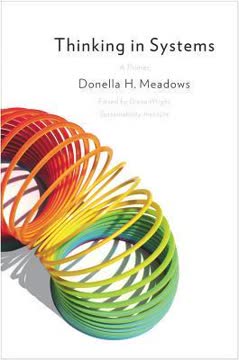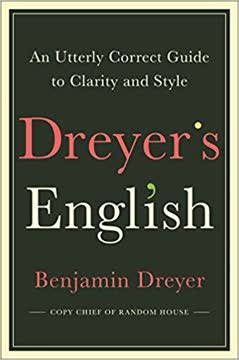Key Takeaways
1. Serve Your Reader Above All Else
The Reader is king. You are his servant.
Focus on them. Your writing isn't about you; it's about delivering information or entertainment that matters to the reader. Forget this, and your writing becomes self-indulgent and ineffective. Always ask: "What's important to my Reader?"
Avoid writer-serving. Don't make readers work for your pity, shock, or understanding. Provide relevant details and allow them to draw their own conclusions. Good writing serves the reader's needs and interests.
Reader's core need. All readers want clear, concise, comprehensible sentences that mean something to them. This fundamental need is your guiding light in crafting effective prose.
2. Master the Sentence: Your Core Tool
The sentence is a microcosm of any written work, and understanding it means understanding writing itself—how to structure ideas, how to emphasize what’s important, how to make practical use of grammar, how to cut the bull, and, above all, how to serve the almighty Reader.
Building blocks. Sentences are the fundamental units of writing, like Lego bricks. Understanding how they are constructed from phrases and clauses gives you power to arrange ideas effectively. Grammar provides the framework for this construction.
Beyond speaking. Unlike spoken language, written sentences require deliberate thought and structure. We often overcomplicate writing because we have too much information and fear leaving things out.
Grammar is useful. Don't fear grammar terms like "dangling participles" or "passive voice." They are tools, not taunts. Learning basic grammar helps you understand sentence mechanics and improve clarity.
3. Control Subordination to Emphasize Key Ideas
...when you don’t fully understand the power of subordinating conjunctions, they can suck the life out of your writing faster than you can say “rejection letter.”
Subordination's job. Subordinating conjunctions (like after, although, because, if, when) make one clause dependent on another, signaling that the dependent clause contains less critical information. They tell the reader, "This is background; the main point is coming."
Avoid upside-down. A common mistake is subordinating the most interesting or important action while elevating a less significant one (e.g., "After shooting his business partner, John realized he was tired"). Ensure your main clause carries the weight of your main idea.
Strategic use. Subordination is a powerful tool when used intentionally. It helps organize thoughts and show relationships between ideas. Use it to downplay less important information, not bury the exciting stuff.
4. Place Modifiers Carefully to Avoid Confusion
...understanding phrases and clauses as modifiers is key to mastering the art of the sentence.
Modifiers describe. Phrases and clauses can function as modifiers, adding description or detail like adjectives and adverbs. Examples include:
- Relative clauses (who was wearing Spanx)
- Prepositional phrases (with round bottom)
- Participial phrases (Running down the street)
Proximity matters. Readers expect modifiers to describe the word closest to them. Misplaced modifiers create awkwardness or unintended humor (e.g., "Antique desk suitable for lady with thick legs and large drawers").
Check your placement. Review sentences with modifying phrases or clauses to ensure they clearly and logically point to the intended word. Simple rearrangement often fixes the problem.
5. Choose Specific, Vivid Words Over Vague Ones
Use specific words.
Show, don't tell. Vague words like person, thing, structure, noise, effect are placeholders that fail to create a real experience for the reader. Replace them with concrete nouns and verbs.
Commit to detail. Don't be lazy or cowardly in word choice. If a detail is important enough to mention, make it specific (e.g., not "a weapon," but "a sawed-off shotgun with a Cindy Lou Who sticker").
Efficiency in vividness. Specific words are an efficient way to make sentences vivid and engaging. They provide a richer, more tactile experience than generic terms.
6. Use Adverbs and Adjectives Judiciously
Adverbs are the best-kept secret of the grammar world.
Modifiers' risks. Adverbs (especially manner adverbs like quickly, happily) and adjectives can add detail, but they often weaken the words they modify or create redundancy (previously written, exact same). They can tell when you should be showing.
Less is often more. Overusing modifiers can dilute impact. Instead of saying "He ran very quickly," show the result: "He ran, leaving a blur in his wake."
Consider necessity. Ask if a modifier truly adds value or if the noun or verb can stand alone. Avoid those that impose value judgments or state the obvious.
7. Prefer Active Voice and Concrete Actions
Passive voice is a powerful tool in the hands of a skilled writer, but it’s brain-numbing poison in the hands of an unskilled writer.
Active vs. Passive. Active voice (Subject + Verb + Object: Ned made the coffee) is generally more direct and powerful than passive voice (Object + "to be" + Past Participle + "by Subject": The coffee was made by Ned). Passive voice often squelches interesting action.
Nominalizations hide action. Nominalizations turn verbs or adjectives into nouns (utilization, happiness, walking). Structures like "the walking of the dog" are wordy and abstract, burying the action.
Unbury the verb. Recasting sentences to use active verbs and avoid nominalizations makes writing more dynamic and clear. Focus on who is doing what.
8. Ensure Pronouns and References Are Crystal Clear
This problem is called an unclear antecedent.
Pronouns replace nouns. Pronouns (he, she, it, they, this, that) stand in for previously mentioned nouns (antecedents). Confusion arises when a pronoun could refer to more than one possible antecedent.
Avoid ambiguity. In "The writer and his father lamented his ineptitude," his is unclear. Ensure every pronoun clearly points to a single noun. Repeat the noun if necessary, even if it feels redundant.
Implied references. Be careful with pronouns like it or implied subjects. Ensure the reader knows exactly what "it" refers to or what the implied subject is doing.
9. Maintain Parallel Structure for Clarity
Parallel form relies on Reader expectations.
Consistency in lists. When listing items, phrases, or clauses, ensure they are all in the same grammatical form. Readers expect elements in a list to attach to shared words in the same way.
Faulty parallels jar. Mixing forms in a list ("He likes swimming, hiking, and to bike") creates awkwardness and confusion. The shared verb (likes) should apply consistently ("He likes swimming, hiking, and biking").
Review lists. Check all lists and series to ensure grammatical consistency. This improves readability and flow.
10. Use Punctuation Like Semicolons and Parentheses with Caution
I hate semicolons.
Semicolons' jobs. Semicolons can separate items in complex lists or link two closely related independent clauses. However, they are often used unnecessarily, sometimes just to signal the writer's knowledge.
Parentheses' purpose. Parentheses insert extra, often non-essential, information. While useful for brief asides or commentary, cramming too much information into parentheses can overwhelm the reader and make sentences messy.
Prioritize clarity. Ask if semicolons or parentheses truly serve the reader or merely convenience the writer. Often, breaking sentences or weaving information into the main text is more effective.
11. Ruthlessly Trim Unnecessary Words and Phrases
Don’t waste his time.
Economy of words. Good writing is lean. Every word should earn its place. Root out flabby phrases, redundancies, and obvious statements that add nothing for the reader.
Common culprits. Watch for:
- Meaningless adjectives/adverbs (exact same, freshly rejuvenated)
- Wordy phrases (in addition to, due to the fact that)
- Hollow structures (He is a man who...)
- Obvious statements (everyone knows you shouldn't do)
Streamline. Develop the habit of questioning every word. Can the sentence be shorter, clearer, or more impactful without it?
12. Understand the "Rules" So You Can Break Them Effectively
All the so-called rules are really just guidelines that can help you serve your Reader—or not.
Guidelines, not laws. Writing "rules" (like "avoid passive voice" or "keep sentences short") are practical tips rooted in good ideas, but they are not absolute. They are tools to help, especially when you're struggling.
Know when to deviate. Master the guidelines first. Once you understand why they exist and how they affect clarity and impact, you can make informed choices about when to ignore them for stylistic effect or artistic purpose.
Reader expectations vary. Be aware that readers' acceptance of rule-breaking can depend on context, genre, and your established credibility. Ultimately, the success of breaking a guideline rests on whether it works for your intended reader.
Last updated:
Review Summary
It Was The Best Of Sentences, It Was The Worst Of Sentences receives generally positive reviews, praised for its clear explanations, humor, and practical advice on sentence construction. Readers appreciate Casagrande's approachable tone and useful examples. Many find it valuable for writers, editors, and grammar enthusiasts. Some criticize the basic level of certain explanations, while others note occasional technical complexity. The book's sections on punctuation, grammar basics, and word usage are particularly commended. Overall, it's recommended as an informative and entertaining guide to improving writing skills.
Similar Books










Download PDF
Download EPUB
.epub digital book format is ideal for reading ebooks on phones, tablets, and e-readers.




